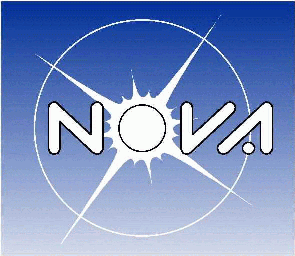Astro-WISE Environment¶
The Astro-WISE Environment (AWE) was created by The Astro-WISE Consortium, a partnership of:
- OmegaCEN-NOVA at the Kapteyn Institute in Groningen, The Netherlands,
- Osservatorio Astronomico di Capodimonte in Napoli, Italy,
- Terapix at IAP in Paris, France,
- ESO in Garching bei München, Germany, and
- Universitäts-Sternwarte München , Germany,
and coordinated by OmegaCEN-NOVA. AWE was conceived as the solution to handle the vast amounts of astronomical data generated by all-sky surveys, particularly those to be observed with OmegaCAM on the VLT Survey Telescope (VST) on Cerro Paranal in Chile.
This is an information system for the scientific analysis of extremely large datasets. It utilizes federated databases and dataservers, and parallel compute clusters to manage these vast amounts of data.
Tutorial¶
This tutorial will give you an introduction to the Astro-WISE environment in about 3 hours. It starts from the level of a completely new user who has never logged in but has an Astro-WISE account. This tutorial consists of exercises to be done primarily from the awe-prompt or notebook.
First follow the steps in HOW-TO Get started to setup your environment.
The tutorial consists of the following topics (links to iPython notebooks):
The awe-prompt basicsBasic calibration tasksAstrometryPhotometryWorking with SourceListsDataMiningGalaxy surface brightness analysisAstro-WISE and Virtual Observatory interoperability
Topics sometimes depend on the results derived in earlier topics. The tutorial is by no means comprehensive or exhaustive. The exercises are very basic and many topics are not discussed at all. To get a more in-depth and comprehensive presentation of the Astro-WISE environment we refer to the HOWTOs and the Manual.
API documentation¶
Howto’s¶
- HOW-TO Introduction
- HOW-TO Get started
- HOW-TO Documentation
- HOW-TO Use Git
- HOW-TO Schedule Astro-WISE compliant observations
- HOW-TO Ingest raw data into the database
- HOW-TO Work with dates and times in AWE
- HOW-TO Process data in a distributed (parallel) way
- HOW-TO Use DARMA
- HOW-TO Use the awe-prompt
- HOW-TO Images and catalogs in Astro-WISE
- HOW-TO Query the database from Python
- HOW-TO Configure process parameters
- HOW-TO Use your Astro-WISE Context to set data scopes
- HOW-TO Calibrations: overview
- HOW-TO Derive the read noise
- HOW-TO Create a Bias
- HOW-TO Create a HotPixelMap
- HOW-TO Create a ColdPixelMap
- HOW-TO Derive the gain
- HOW-TO Create a flat-field
- HOW-TO Correct fringes in science images
- HOW-TO Derive astrometry
- HOW-TO Create global astrometric SourceLists
- HOW-TO Create a global astrometric solution
- HOW-TO Inspect an astrometric solution
- HOW-TO Troubleshoot astrometry quality problems and improve solutions
- HOW-TO Photometric reference catalog and standard extinction curve
- HOW-TO Make a photometric source catalog
- HOW-TO Photometric pipeline(2): transformation tables
- HOW-TO Photometric pipeline(3): extinction and zeropoint
- HOW-TO Photometric pipeline(4): illumination correction
- HOW-TO Set timestamps from the awe-prompt
- HOW-TO Subtract sky background
- HOW-TO Subwindow statistics
- HOW-TO Understand weights
- HOW-TO Image pipeline: overview
- HOW-TO Create a ReducedScienceFrame
- HOW-TO Derive an astrometric solution
- HOW-TO Create a RegriddedFrame
- HOW-TO Create a CoaddedRegriddedFrame
- HOW-TO SourceLists in the Astro-WISE System
- HOW-TO Use Galfit in Astro-WISE
- HOW-TO Use Galphot in Astro-WISE
- HOW-TO Photometric redshifts (OLD)
- HOW-TO MDia (OLD)
- HOW-TO VODIA (OLD)
- HOW-TO Use galactic extinction in Astro-WISE
- HOW-TO Use SourceCollections in Astro-WISE
- HOW-TO Inspect
- HOW-TO View the contents of a photometric association catalog
- HOW-TO View processing results as a mosaic (MEF file)
- HOW-TO Image services
- HOW-TO Use TinyTim
- HOW-TO Obtain PSF information of science images
- HOW-TO Visualize observational pointings with ObsViewer (OLD)
- HOW-TO Perform a trend analysis and to find outliers
- HOW-TO Use SAMP in Astro-WISE
- HOW-TO Use Query Driven Visualization in Astro-WISE
- HOW-TO Define a new instrument in the Astro-WISE System (to enable ingesting data from it)
- FAQ
Manual¶
Database Tasks (OLD)¶
Installation (OLD)¶
STUFF (OLD)¶
- HOW-TO Use Astro-WISE Context to efficiently process, qualify, publish and manage project data
- HOW-TO Use your Astro-WISE Context to set data scopes
- Context - basic ideas
- Overview Photometric Calibration
- HOW-TO Astro-WISE paradigms
- HOW-TO Grid Storage and Processing
- HOW-TO DBViewer: plotting and accessing (external) image- and source-catalogs
- HOW-TO Use local code for the DPU
- Astro-WISE and exercises overview
- Distributed Processing
- Common architectural design for persistency of Galfit, Galphot, PhotZ, VODIA, MDIA, etc.
- Distributed Processing
- SCAMP report
- AWE Grid design
Tutorials (non-notebook, slightly outdated)¶
- Tutorial Introduction
- Astro-WISE basics
- Astrometric calibration
- Photometric Pipeline
- SourceList and AssociateList Exercises
- Data Mining Exercises
- Galaxy surface brightness analysis
- Interoperability between Astro-WISE and Virtual Observatory software
- Where to go next after this tutorial
- Photometric Redshift Determination






